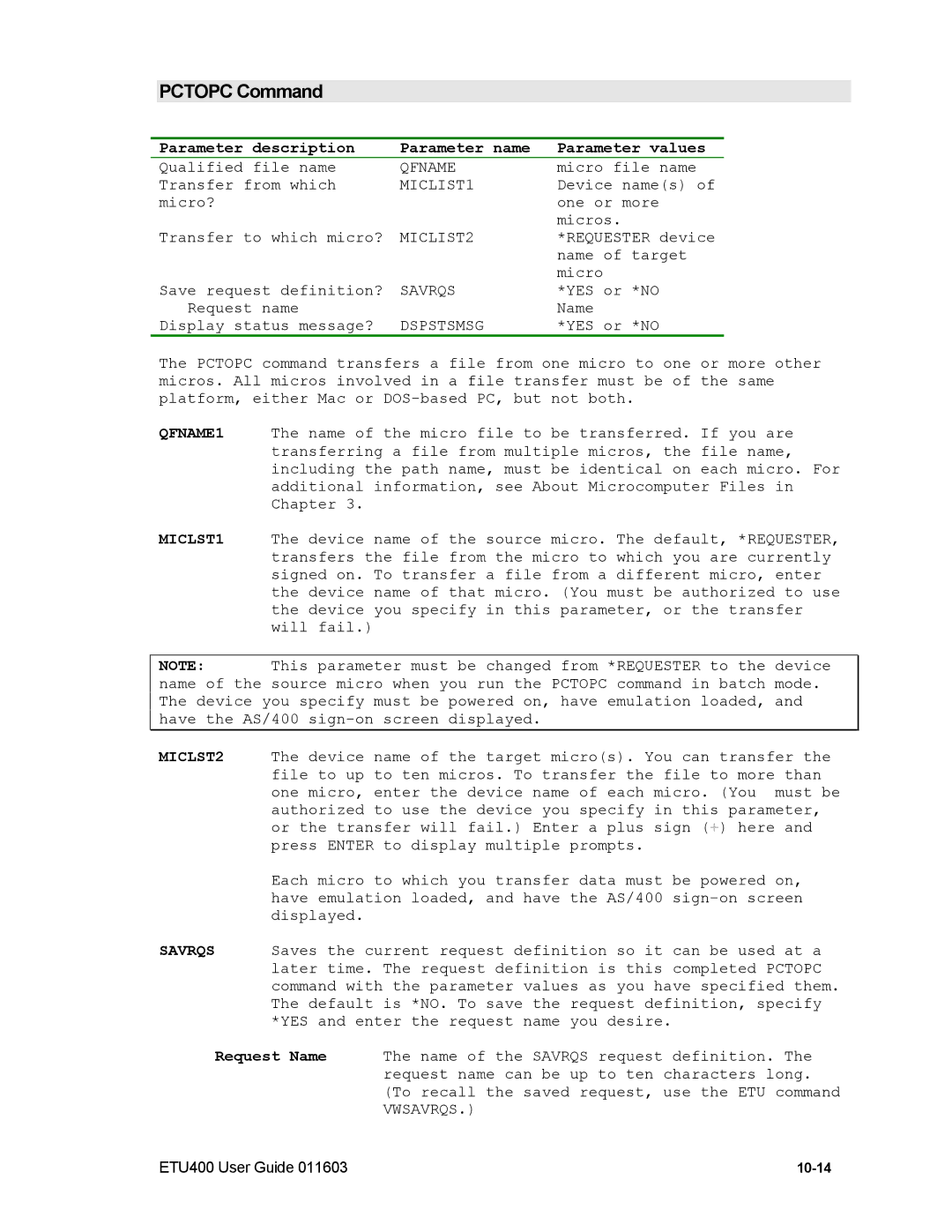
PCTOPC Command
Parameter description | Parameter name | Parameter values |
Qualified file name | QFNAME | micro file name |
Transfer from which | MICLIST1 | Device name(s) of |
micro? |
| one or more |
Transfer to which micro? | MICLIST2 | micros. |
*REQUESTER device | ||
|
| name of target |
Save request definition? | SAVRQS | micro |
*YES or *NO | ||
Request name | DSPSTSMSG | Name |
Display status message? | *YES or *NO |
The PCTOPC command transfers a file from one micro to one or more other micros. All micros involved in a file transfer must be of the same platform, either Mac or
QFNAME1 The name of the micro file to be transferred. If you are transferring a file from multiple micros, the file name, including the path name, must be identical on each micro. For additional information, see About Microcomputer Files in Chapter 3.
MICLST1 The device name of the source micro. The default, *REQUESTER, transfers the file from the micro to which you are currently signed on. To transfer a file from a different micro, enter the device name of that micro. (You must be authorized to use the device you specify in this parameter, or the transfer will fail.)
NOTE: This parameter must be changed from *REQUESTER to the device name of the source micro when you run the PCTOPC command in batch mode. The device you specify must be powered on, have emulation loaded, and have the AS/400
MICLST2 The device name of the target micro(s). You can transfer the file to up to ten micros. To transfer the file to more than one micro, enter the device name of each micro. (You must be authorized to use the device you specify in this parameter, or the transfer will fail.) Enter a plus sign (![]() ) here and press ENTER to display multiple prompts.
) here and press ENTER to display multiple prompts.
Each micro to which you transfer data must be powered on, have emulation loaded, and have the AS/400
SAVRQS Saves the current request definition so it can be used at a later time. The request definition is this completed PCTOPC command with the parameter values as you have specified them. The default is *NO. To save the request definition, specify *YES and enter the request name you desire.
Request Name The name of the SAVRQS request definition. The request name can be up to ten characters long. (To recall the saved request, use the ETU command VWSAVRQS.)
ETU400 User Guide 011603 |
